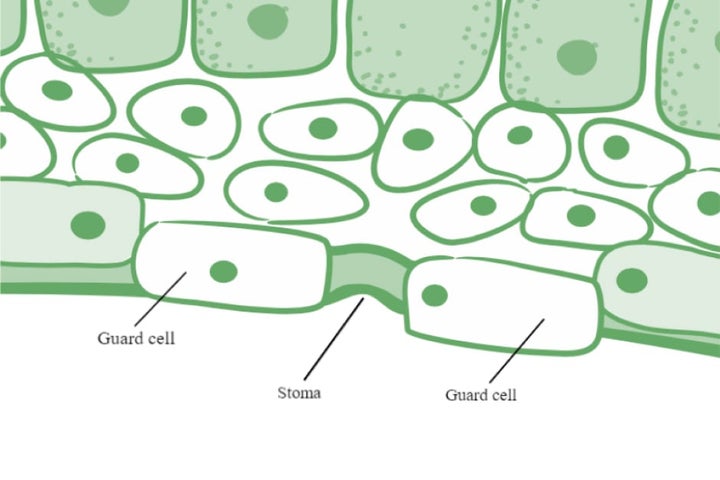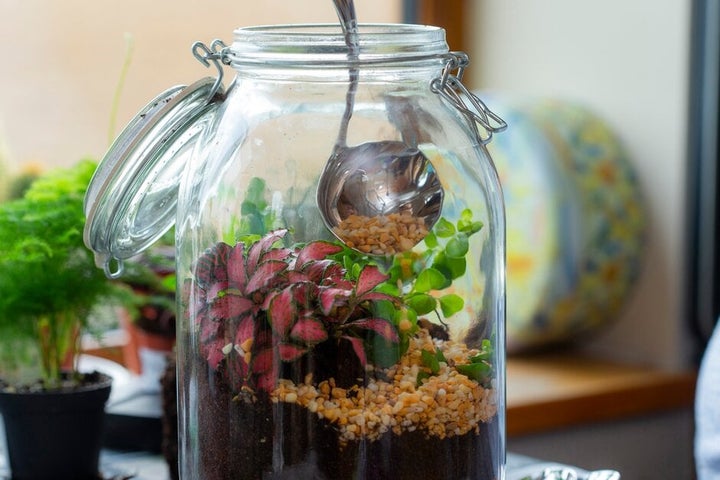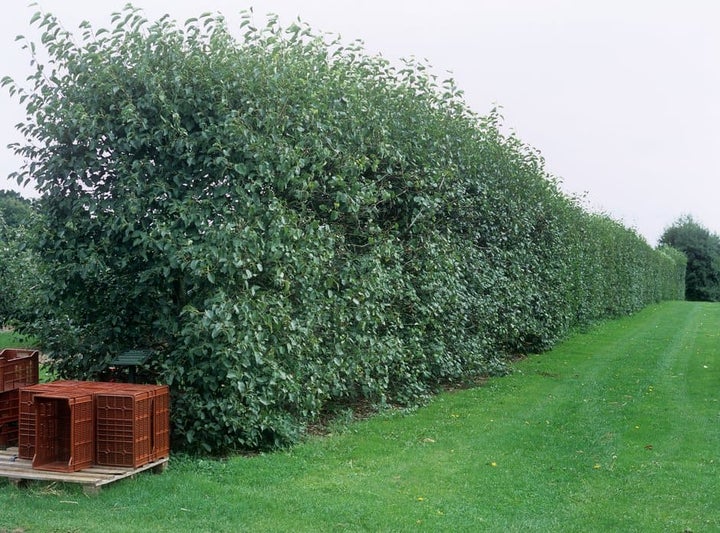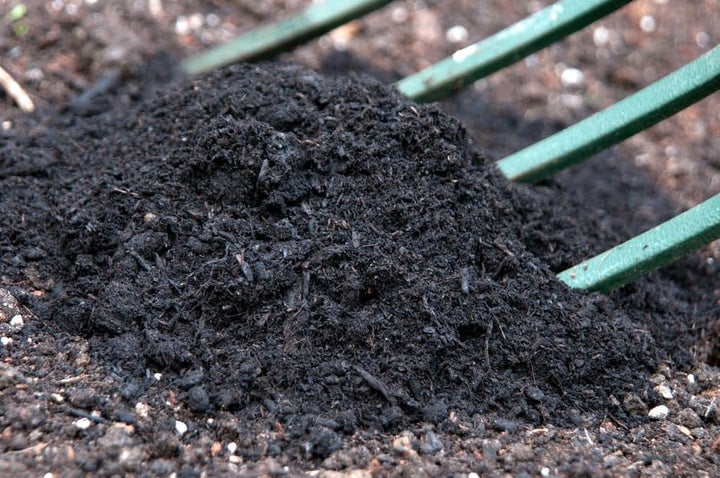
Quick facts
The upward flow of water through a plant, created by transpiration, delivers vital nutrients and raw ingredients to cells
When transpiration speeds up, such as in warm and/or windy weather, plants need more water. When it slows down, such as in cool or humid weather, they need less
The care we give our plants, in our gardens, homes and greenhouses, helps them to manage their water loss and keeps them growing well
How water moves through plants
Water travels up through a plant, against gravity, from its roots to its leaves, through a network of . The pulling force that generates this movement is created by water evaporating from the leaves, in a process called :

Water moves into and through a plant by osmosis, from a place where it’s abundant to a place where it’s less so. In the leaves, water moves from xylem vessels in the veins, into leaf cells, and out into the spaces between cells.

As water moves out of leaf cells it is warmed by the sun and evaporates, filling the spaces with water vapour. Once these contain a higher concentration of water than the outside air, the vapour diffuses (moves) out.

Water lost from the leaves is replaced by more from leaf cells, and in turn from xylem vessels in the leaf, stem and roots, and finally from soil water, creating a continuous pull.

Water is cohesive (its molecules are attracted to each other and cling together) and adhesive (it 'sticks' to cell and vessel walls), so it moves as a column up through a plant.
When you dig up a plant, removing its roots from the soil, you break the continuous stream of water moving through it. You may see temporary wilting and a check in growth as a result. Giving plants a good drink before and after moving them helps to reduce this interruption.
For more advice see our guide to moving trees and shrubs.
The function of transpiration
The pull of water through a plant, created by , has a number of important functions:
- it delivers soluble mineral to the places where they’re needed for growth
- it delivers water, a raw material in the process of , to the leaves
- it keeps cells plump and firm, providing stability and helping plants stay upright
- it keeps plants cool, as water evaporating from warmed leaf surfaces takes heat away with it
Did you know?
We benefit from transpiration too. The water lost from garden trees cools the air around them, providing us with somewhere comfortable to sit on hot days. On a larger scale, this cooling helps to mitigate the effects of rising summer temperatures due to climate change.

How plants control water loss
A mature tree can drink up to 900 litres (200 gallons) of water a day, yet plants lose most of the water they take up. Only around two per cent is used in processes like and tissue building. Uncontrolled, this loss of water would be fatal for a plant.
Luckily, plants have a way to conserve water when they need to – the leaf pores through which water vapour escapes, called , are bordered by guard cells that act as doors to open and close each pore (stoma). When roots detect dryness in the soil or when water is lost from leaves more quickly than it can be replaced, a chemical signal is sent to these guard cells to close the pores.

Plants originally from regions of low rainfall often have other leaf adaptations to reduce water loss:
- thick waxy (the coating on leaves) create a barrier to evaporation
- narrow leaves with fewer pores reduce the amount of water escaping
- leaf hairs insulate, trapping air and moisture, to reduce the rate of
- sunken stomata slow air currents and reduce vapour loss

As these plants are adapted to lose less water, they need to drink less as a result, so take care not to overwater if you have them growing in your garden.
For more plants suited to dry conditions, see our guide to drought-resistant plants.
How plants get rid of excess water
close in the dark, stopping water vapour from escaping and reducing the effect of transpirational pull. Even so, root pressure still pumps some water up through a plant at night. To preserve their water and nutrient balance and prevent cells rupturing under pressure, some plants lose excess water by . They exude droplets overnight through specialised pores, called hydathodes, usually found at leaf margins. These droplets can be mistaken for dewdrops in early morning.
If a plant takes in more water than it can let out, its cell walls eventually burst under pressure, causing water-soaked patches on the leaves that turn corky. This is known as oedema, and can usually be remedied by reducing watering.


Understanding your plants' water needs
In humid conditions, slows down, as the concentration of water inside a leaf is no longer much higher than the outside air. As less water is lost from a leaf in these conditions, less is needed by the roots to replace it.
Conversely, in warm and/or windy weather, transpiration speeds up as water evaporates faster at higher temperatures and moving air currents wick moisture away from around a leaf. In these conditions, plants need plenty of water to replace what is lost and are prone to wilting if this isn’t available.
You can change the level around your plants to suit their needs, helping them to stay happy and healthy:
In our homes
The air in our homes tends to be quite dry, especially over winter when the central heating is on. Houseplants are at risk of losing more water than they can take up, resulting in dry, crispy leaves, leaf drop and wilting. So, if you grow houseplants:
- Mist plants regularly, especially those from humid, sub-tropical climes
- Group plants together to raise air humidity around their leaves
- Stand plants in saucers of wet gravel
- Grow plants in a terrarium


In the greenhouse
Greenhouses heat up quickly on sunny days, increasing the rate plants transpire and the amount of water they need to drink. To look after your greenhouse plants:
- the floor on hot days to increase relative humidity
- Use greenhouse ventilation and shading to reduce the temperature
- Mist foliage regularly
- Pay close attention to watering – especially and young plants growing in small volumes of


In the garden
It’s harder to control humidity levels outdoors, but there are still a few things you can do:
- Plant a windbreak if your garden is exposed, to slow air movement and raise the humidity around your plants
- Group together container plants, especially those on sunny patios
- Improve your soil by digging-in organic matter, so it holds more water for roots to drink
- Pay close attention to watering in warm and/or windy weather – especially new plants and those in containers.


Your next steps
Now you know more about how plants lose water, put this into practice to help your plants thrive:
- Give plants a good drink before and after moving them to reduce interruption to the stream
- Plant a tree to cool your garden's microclimate – see our guide to trees for smaller gardens
- Choose plants with narrow, hairy or waxy leaves if you have a hot, sunny garden or free-draining soil, as they are adapted to lose less water – see our guide to drought-tolerant plants
- Check your plants regularly in warm and/or windy weather, when transpiration speeds up, to ensure they have enough water at the roots
- Raise the air around your houseplants, especially when the heating is on, to avoid the damaging effects of drying out











